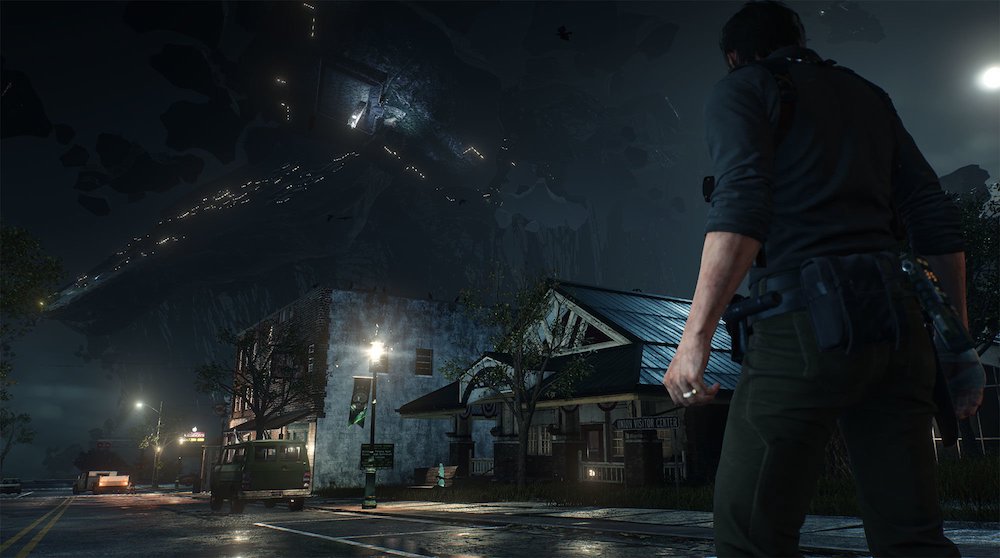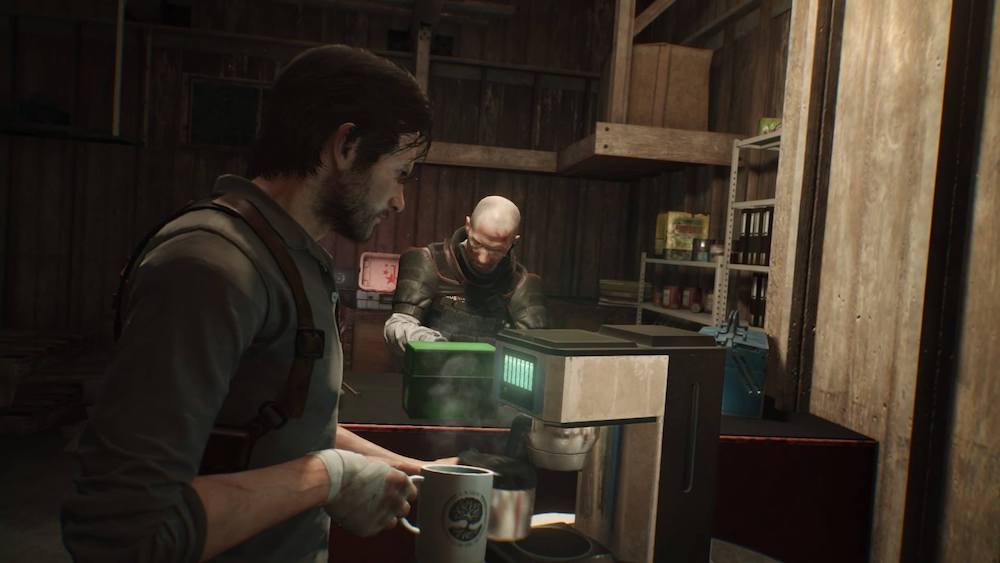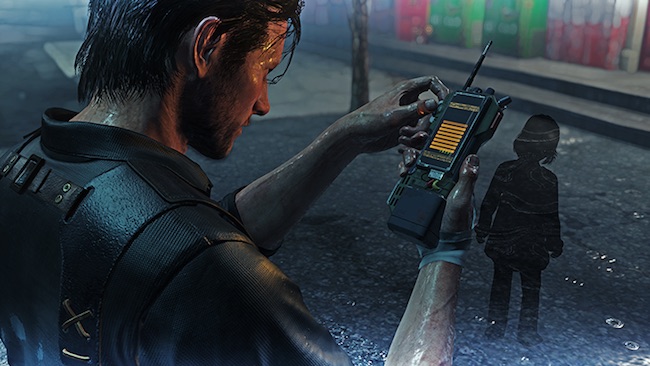
The Evil Within is a franchise that was conceived on the notion of returning survival horror to its roots. It was a bold statement that resonated with many horror fans at the time, given the industry’s gradual shift towards action horror, and the fact Resident Evil creator Shinji Mikami was at the helm meant that expectations were sky high. While the first game did, for the most part, achieve that goal, it also suffered from a slew technical issues and odd design choices. It also wasn’t very scary, which was a let down for some. Where it fell short, however, it made up for it with brilliant and inventive ideas. The game clearly demonstrated that there was a tremendous amount of untapped potential still to be realised, so it was with great anticipation that a sequel was announced. For both better and worse, The Evil Within 2 expands on the original.

Set three years after the events of the original game, we learn that Sebastian Castellanos now spends most his time trying to find solace at the bottom of a bottle. After the death of his daughter, the disappearance of his wife, and the disturbing series of misadventures he suffered through while investigating the case at Beacon Mental Hospital, it’s become clear that he’s pretty much given up on life. What he never expected, however, was for his ex-partner, Juli Kidman (who turned out to be a Mobius agent), to just randomly show up at a bar one day after countless failed attempts to locate her over the years. It turns out his daughter never actually died in a fire, and that she was kidnapped by Mobius to serve as the core for a different STEM project. Not just that, but she’s also recently gone AWOL and they need Sebastian’s help to find her before it all falls apart.
Objectively, I think it’s fair to say The Evil Within 2 is a far superior game all around. The narrative is more coherent, the gameplay is much tighter, and it generally runs much better than its predecessor. However, despite being a more polished game, there’s something special about the first game that’s missing here in the sequel. While the original narrative was justly criticised for being convoluted, it was also wildly imaginative and interesting. The sequel, on the other hand, despite being better written, kind of feels like a Matrix sequel. The science fiction component has now been clearly established, so we know it’s not real, and this, in part, diminishes the effectiveness of the horror. The premise also borrows heavily from established tropes so much that it easily could’ve been interchanged with a Templar plot in an Assassin’s Creed game.

Unlike Sebastian’s first encounter with STEM, which turned into a hellish romp through the mind of a psychopath, this project was supposed to be much more controlled. Enter Union, a simulation of idyllic Small Town, USA, which was basically created as a way to test whether a community of people could be kept happy and controlled from within a STEM world. All was seemingly going well, too, until Lily, Sebastian’s daughter and Union’s core, went missing – which set in motion a gradual decay of the world as well as the corruption of the people living there. Taking cues from games such as Silent Hill and The Last of Us, the world is in a state of total disarray, so you’ll need to sneak and fight your way through Union as you build up resources and try to obtain answers from any Mobius agents that may still be alive.
The revamped gameplay is definitely one of the game’s biggest strengths, as it embraces familiar frameworks from other games while reworking various staples from the original. Once again, there’s a hub area you’ll frequent, which is set in Sebastian’s old KCPD office this time around, and where you’ll track plot elements, craft and upgrade weapons, open lockers for rewards, test your skills at a Resident Evil 4-type shooting gallery, and engage with a familiar face to unlock abilities and improvements using green gel that you’ll collect from downed enemies. The biggest change to how it plays, however, comes by the way of more open areas which you can freely explore in some chapters. They are a really great idea and positively impact the overall pacing, but they’re also where this game’s flaws are most apparent.

The most brilliant component of the first game is how the narrative allowed for players to be whirled away to basically anywhere. It wasn’t always easy to follow what was going on exactly, but the amazing environmental variety was continually engaging. In The Evil Within 2, this has been scaled back significantly as the game is rooted entirely within Union. This isn’t necessarily a bad thing, however, as there are still plenty of linear and wonderfully creative segments you’ll play through. Not to mention, the open areas can be a lot of fun. There’s a simple joy to be had in scavenging the remains of a world in chaos as you search abandoned buildings for supplies, sneak through alleyways to stealthily take down enemies from the shadows, or track resonance signals to uncover what happened here before you arrived.
The communicator is a great new addition to aid exploration. It’s also how you’ll pinpoint the aforementioned signals. While traversing the open areas of the game, you’ll be able to use it to track your main objective and side quests, as well as to seek out resonance points (echoes of past events). There’s still a map you can access from the menu, but the communicator is used in-game, and it’s the only way you’ll be able to locate a number of optional supply caches, ammo pouch upgrades, and a recurring encounter with a certain otherworldly monstrosity. There’s a lot to be gained by exploring, so it’s definitely worth investing time into. Returning from the first game, too, are safe houses, which are used to travel to the main hub, as well as save, use a workbench, brew coffee for a full heal, or engage with survivors.

Where I take issue with this new approach is not in the framework, as that works well enough, but the fact that the AI can be so incredibly stupid at times that it diminishes the experience. While the AI admittedly performs better under controlled conditions, enemies are totally daft when wandering out in the open. It only takes running away for a few seconds for them to forget what they were doing. Sometimes I’d even just run and hide behind a box right in front of them and they’d lose sight of me. “The Lost,” as they’re called, are just straight up not scary. They’re very generic and too often come grouped with duplicate designs on-screen at once. The Evil Within 2 nails the survival component, but it plays much better when you’re traversing its more linear sections and tackling enemy encounters that have some scripting.
Just like with the original, it’s these tighter, more scripted parts of the game which are the most compelling. There might be less overall, but what’s here is just as inventive and perhaps even more impactful because they’re paced out a lot better. It’s also here where the narrative is able to shine brightest as what The Evil Within 2 does better than its predecessor is tell a great character story. The underlying themes of secret organisations and artificial worlds isn’t anything to write home about, but Sebastian himself is much better written this time around and has a personal story that’s well worth investing in. The various personalities he’ll encounter inside of Union are also handled quite well and deliver the sort of theatrics you’d hope for while subsequently setting the stage for some memorable boss encounters.

I think it’s fair to say The Evil Within 2 is an easier game than the last. In part, it’s because you can see more on-screen without those horrendous black bars blocking your vision, and also because the controls are much tighter. Although, I did notice more checkpoints and resources by comparison. This isn’t necessarily an issue as there are harder modes available, but there’s still something important that’s been lost. The most iconic thing about the first game, for me, was surviving a vicious encounter and hearing “Clair de Lune” off in the distance and knowing I’d soon find reprieve. It was a very powerful psychological trigger, and it’s barely included here. I appreciate it doesn’t apply the same way in open areas where safe houses are static and marked on a map, but it should have been reworked in a more significant way.
If there’s one component that’s straight up better, though, it’s the game’s visuals and performance. The first game was pretty rocky in parts, and while there are still some minor hiccups to contend with (pop-in on PS4, for example), it’s definitely a vast improvement overall. The art direction is also as captivating as ever, as is the sound design and music. The monster design, as I’ve indicated, is a bit lacklustre with the general enemies, but this is greatly made up for with the boss encounters, which are much more inspired. Just a word of advice to all developers, though – please don’t re-use bosses by haphazardly dropping them into the more open parts of a game after they’ve been defeated. It absolutely destroys the impact of those encounters, especially when they just race around moronically like the standard enemies.

The Evil Within 2 isn’t a scary game. In fact, it’s even less so than the original given the narrative construct it’s built around. Like a Matrix sequel, it’s just not as impactful once you know how it all works. Nevertheless, what this sequel does nail is the survival component. It also more than makes up for its trope-driven plot with a genuinely fantastic character story that’s well worth investing in. What I appreciate about this game, too, is how it embraces new ideas, and while I think it’s for better and worse in some parts, there’s no denying it’s a technically superior game on nearly all fronts (the terrible AI excluded). A little bit of the magic from the original has been lost in the process of reinvention, but it’s still just as imaginative and captivating as ever and is a great addition to both this series and the genre as a whole.











